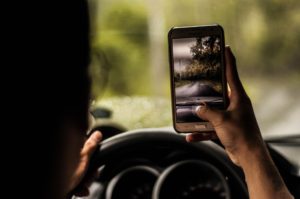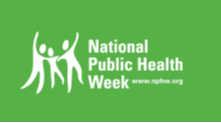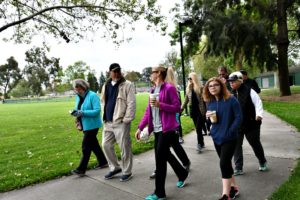
Cell phones while driving put many in danger
Ask Mr. Pedometer and Friends…
April 17, 2019
Q: Mr. Pedometer, I have noticed more and more people ignoring the law and using cell phone while driving.  Don’t people realize the dangers to themselves and others?
Don’t people realize the dangers to themselves and others?
A: Sadly, your observations are correct. April is Distracted Driving Awareness Month, so here’s what the National Safety council has to say about the problem:
- “Drivers talking on handheld or hands-free cell phones are 4X as likely to be involved in a car crash.”
-
“Contrary to popular belief, the human brain cannot multi-task. Driving and talking on the phone are two thinking tasks that involve many areas of the brain. Instead of processing both simultaneously, the brain rapidly switches between two cognitive activities.”
-
Talking to someone on a cell phone while driving is more dangerous than conversing with someone in the car. “Drivers distracted by cell phones are more oblivious to changing traffic conditions because they are the only
 ones in the conversation who are aware of the road. In contrast, drivers with adult passengers in their cars have another set of eyes and ears to help keep the driver alert of oncoming traffic problems.”
ones in the conversation who are aware of the road. In contrast, drivers with adult passengers in their cars have another set of eyes and ears to help keep the driver alert of oncoming traffic problems.” - “A controlled driving simulator study conducted by the University of Utah found that drivers using cell phones had slower reaction times than drivers with .08 blood alcohol content, the legal intoxication limit.”
This is a good month to take the pledge to drive cell-phone-free. It could save your life (and the lives of others).
I pledge to Just Drive for my own safety and for others with whom I share the roads. I choose to not drive distracted in any way – I will not:
- Have a phone conversation – handheld, hands-free, or via Bluetooth
- Text or send Snapchats
- Use voice-to-text features in my vehicle’s dashboard system
- Update Facebook, Twitter, Instagram, Vimeo or other social media
- Check or send emails
- Take selfies or film videos
- Input destinations into GPS (while the vehicle is in motion)
- Call or message someone else when I know they are driving
Before you start your car, turn off your phone and Just Drive.
EAT RIGHT, MOVE MORE, AND SLEEP WELL TO BE WELL.

 that well-maintained sidewalks can encourage physical activity and that safe biking networks lead to more cycling and fewer injuries among bicyclists. Rates of preventable deaths — such as deaths from heart disease, diabetes and cancer — typically go down in communities where local public health spending goes up. Other research finds that deaths from cardiovascular disease, diabetes and the flu decline significantly in communities that expand their networks in support of population health goals. “
that well-maintained sidewalks can encourage physical activity and that safe biking networks lead to more cycling and fewer injuries among bicyclists. Rates of preventable deaths — such as deaths from heart disease, diabetes and cancer — typically go down in communities where local public health spending goes up. Other research finds that deaths from cardiovascular disease, diabetes and the flu decline significantly in communities that expand their networks in support of population health goals. “